
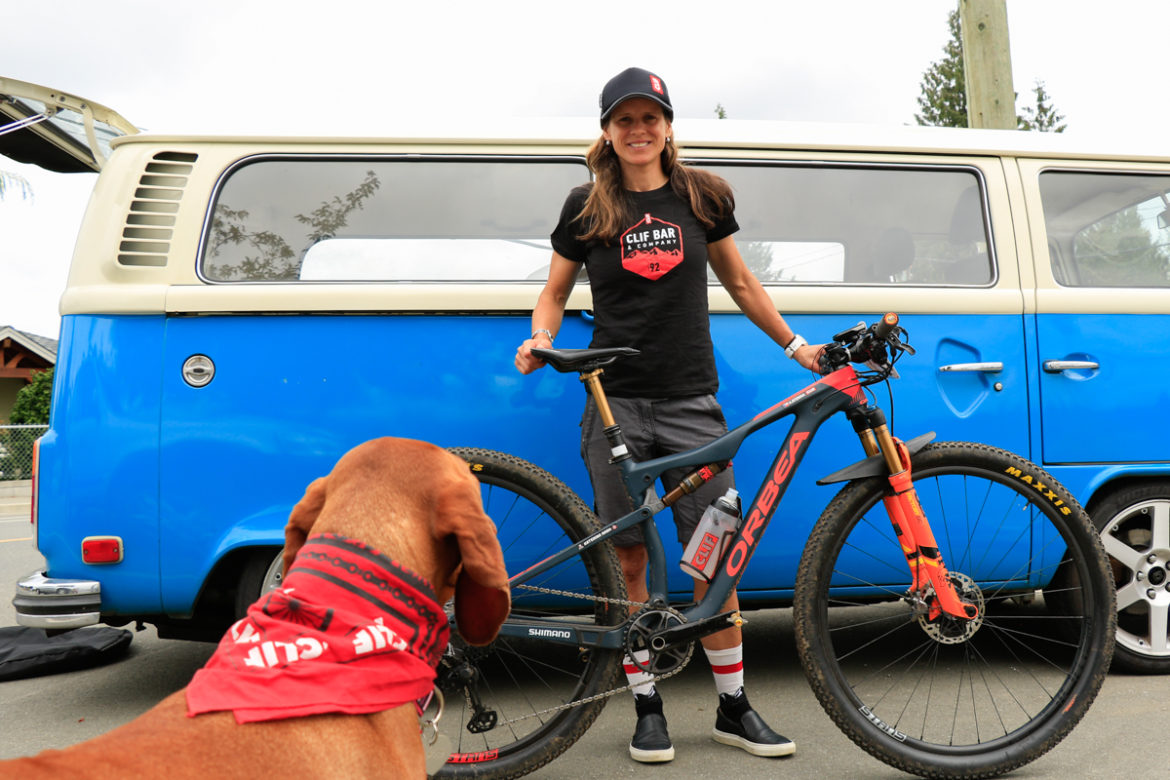




The BC Bike Race, a seven day stage race around the west coast of British Colombia, is no ordinary cross-country race. The climbs are tough, and the descents are even tougher. The event not only draws in a number of accomplished cross-country athletes, but a few outliers too, and all of them run something a bit burlier than usual.
This year has been on the wetter side, with rain on multiple days, which has made for some sketchy descents. Sure, a rigid post and two-point-oh tires could work on some of the stages, but why risk it? This is a descenders’ cross-country race. We caught up with a few of the pros and personalities around BC Bike Race to see how they set their bikes up for BCXC.
McKay Vezina, Giant Trance Advanced
Mckay Vezina is a Giant Factory Racing athlete and primarily races enduro and the Enduro World Series. This year, he’s trying a few different things, like the BC Bike Race.

Why this bike for BCBR?

It’s probably the smallest bike they have that I’d feel comfortable racing this on. They have the Anthem which is a little less travel and a little steeper geometry and that’s just a little bit too big of a difference between my enduro race bike, so I went with the Trance. This is 115mm rear and 130mm in the front. It’s small travel, but with the new geo it rips on the descents and that’s where I like to have fun.
What’s special about your BCBR set up?

The only thing I changed is that I’m running the Giant TRX carbon wheels and am running way lighter tires than I usually run. I’m usually a Minion and Aggressor kind of guy, but here I’m running a Forekaster in the front and an Ikon in the rear and it’s been surprisingly awesome.
What is your most preferred component for BCBR?
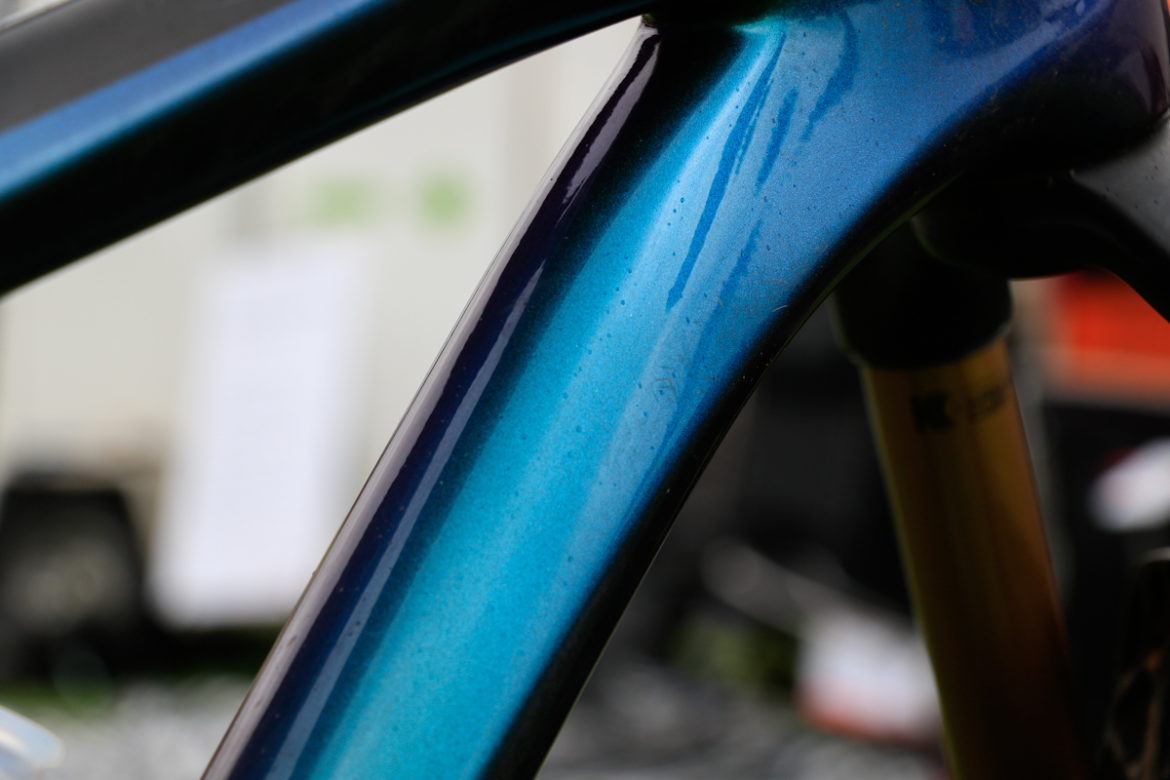
Definitely the wheels and tires. My bike is a little heavier than the other guys so I knew that if I could drop the weight a little bit it would be an advantage for me, and it’s been paying off for me.
Payson McElveen, Trek Top Fuel

The orange paint scheme is custom for McElveen as part of his White Rim project. McElveen tackles a number of trail and XC races every year, but this is his first time at BC Bike Race.
Why this bike for BCBR?

It just became available and it’s kind of the ultimate BC Bike Race machine. The new Top Fuel is not a pure XC race machine, and a pure XC race machine is not what you want at BC Bike Race. There’s 120mm in front and 115mm in the rear and slacker geometry. I knew this race was technical, but it’s actually been really eye-opening how it races. Most of the races I’ve done it plays out in the climbs, but this race is the opposite, the descents are more selective and that’s where the group is breaking up.
What’s special about your BCBR set up?

This is pretty much how I always run the bike. Sometimes I’ll have a rigid post rather than a dropper, but that’s rare on this bike. For the new geometry to really shine, you need to have a dropper on it to push its abilities. I’m even running the Aspen 170 Exo tire I normally would.
What is your most preferred component for BCBR?

The dropper post. It’s a complete game changer. Other than that, the geometry as a whole is a lot more stable than other cross-country descents. When things are getting wild and you’re 20 minutes in a full-on descent, having a stable, capable platform goes a really long way.
Brian Kennedy, BMC Agonist One
Brian Kennedy is a mountain bike YouTuber. He’s more commonly known by his channel name, BKXC. Kennedy is riding a BMC Agonist One, and YouTubing the entire event for his channel. He’s also riding with a pack all seven days, full of GoPro and camera gear.

Why this bike for BCBR?

BMC was kind enough to sponsor me for this trip. Otherwise I might not be riding BC Bike Race and it’s a full-suspension, with 120mm front and rear and it’s perfect. I’ve bottomed out a couple of drop outs on it, but otherwise, it has a [suspension] lockout on it, and you fly.
What’s special about your BCBR set up?

The only thing I changed is that I put on Ergon GA2 fat grips and I also put on a power meter, otherwise nothing. I’m all about the hand fatigue, and the grips seem to be helping.
What is your most preferred component for BCBR?
It’s hard to pick one because I think they all come together as one to be light, and the lightness has been very good on the climbs. When I pick it up, I’m like ‘how is this so light?!’, compared to my enduro bike and other bikes. I think the tires are also the lightest part, but also the part I’ve been the most paranoid about.
Sam Schultz, Rocky Mountain Element
Sam Schultz is an Olympian, national champion, and an endurance athlete from Montana. Schultz doesn’t run a full schedule of racing anymore, but this is his third time at the BC Bike Race.

Why this bike for BCBR?

It’s pretty much the perfect bike for BC Bike Race, as far as I know. This is my third time here and it’s just super efficient, but still playful on the descents. It’s nice to have 100mm on the rear and 120mm up front.
What’s special about your BCBR set up?

Nothing really. I don’t do a whole lot of races anymore, this is one of my few races. So, this is built up with BC Bike Race in mind. It’s sort of the big race objective of the year.
What is your most preferred component for BCBR?

Jeez, I’d have to say my saddle. A friend of mine makes them in his garage in Missoula. They’re super comfortable saddles and I have some back issues, so this kind of centers me on the bike better than others that I’ve tried and I have a hard time riding without, [especially] on seven days of BC singletrack. And, little known fact, I’ve given up chamois’ on the bike partly because the seat’s so comfortable. So that’s my weird one component.
Geoff Kabush, Yeti SB100

Why this bike for BCBR?
Well, it was a good time when I came to Yeti. They launched this bike, which is sort of XC-ish or “down country,” but it’s the perfect kind of bike for these types of events. For the events I’m doing now, it’s a lot more singletrack, and a little more travel with the Stepcast 34 and a little more travel with the dropper, so it’s a lot more fun. It’s exactly the kind of bike I think I’d buy for the XC-ish set up here in BC.
What’s special about your BCBR set up?

It’s pretty much stock. I played around the beginning of the year going full XC for Sea Otter putting the Step Cast 32 on and a high post, but this is pretty much how I run it. When I ride it for fun, I’ll put a DHF 2.3 on, because it’s a really capable bike too. I originally was going to run some 2.25″ Aspens, but coming off my SB150 they just looked really small. So now I’m using 2.3″ Recon Races which I can run a little bit less pressure to take the edge off.
What is your most preferred component for BCBR?
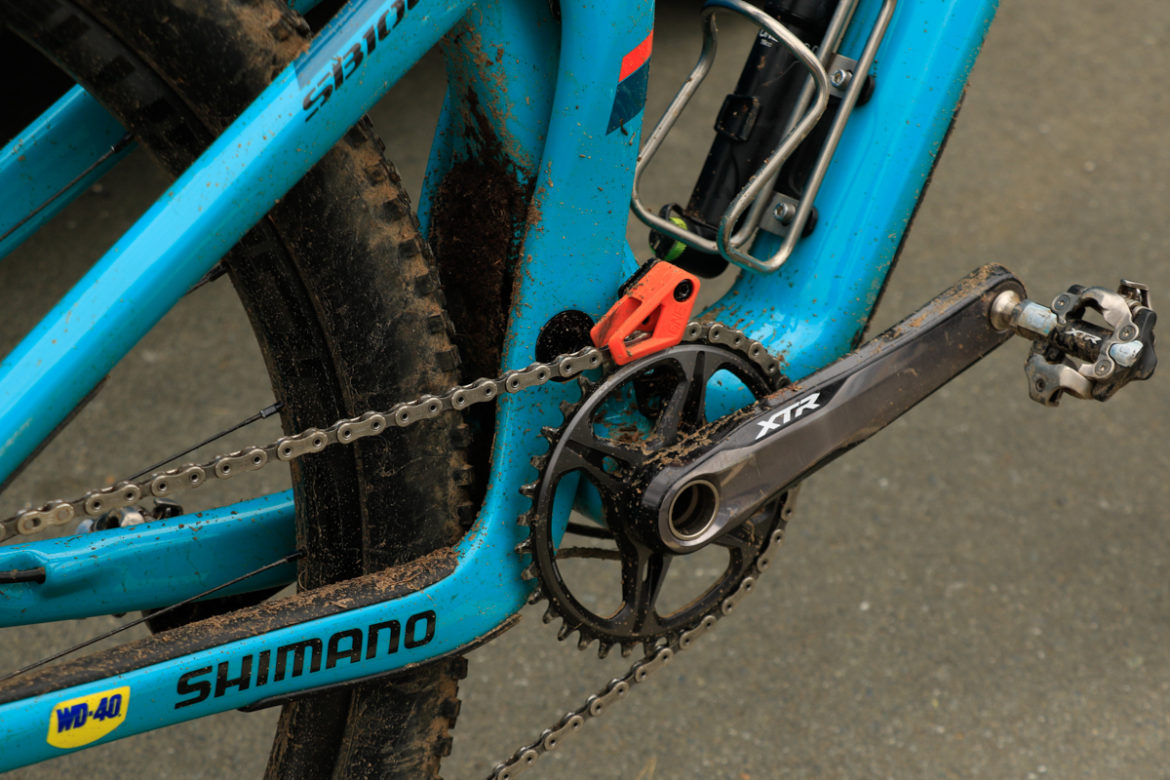
That’s a tough one. Reliabliity is big here, so it’s always nice to be running Shimano. As a big change last year, I got the new XTR just before the race. The change in the gearing makes a huge difference, and having a wider range of gears which covers everything for the diverse terrain.
Katerina Nash, Orbea Oiz

Why this bike for BCBR?

Well, it’s Orbea’s version of cross-country full-suspension race bike. I’ve ridden other models, but it’s the only bike I’ve ridden at BCBR that meets the requirements for good trail riding yet being a good climbing bike. [Two years ago] I added a seat dropper and I can’t believe I never added it before. It’s fun to have.
What’s special about your BCBR set up?

I kept it the same way that I would do the Epic Rides or other races I do throughout the summer. Sometimes for Downieville Classic, I’ll put a bigger fork on, but for here, I just kept it as is. It just sort of works for the trails around here. I usually race Ikon tires, and for here it works. I don’t want to be swapping tires every day, so I’m going with something I know will work for the whole week.
What is your most preferred component for BCBR?

The bike itself, obviously, but I would go with the seat dropper. The terrain here is challenging and with the steep, rooty, rocky descents it just added the level of confidence and changes your riding style.














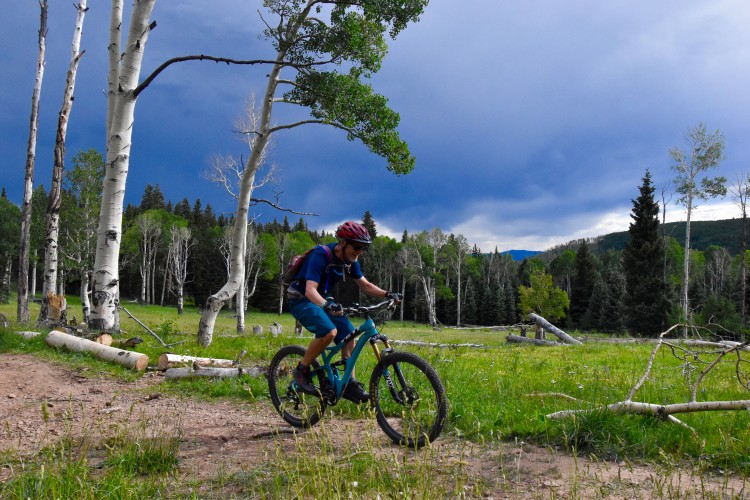
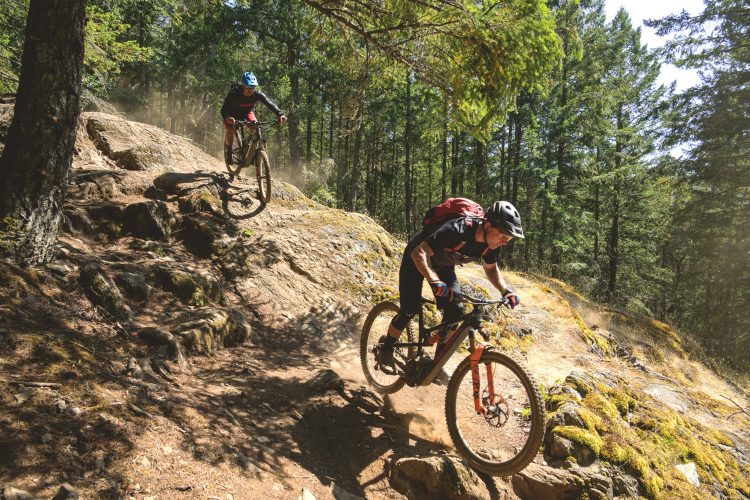





0 Comments